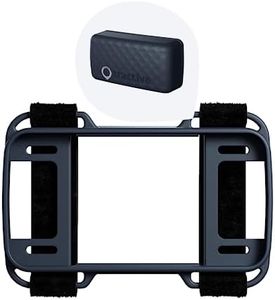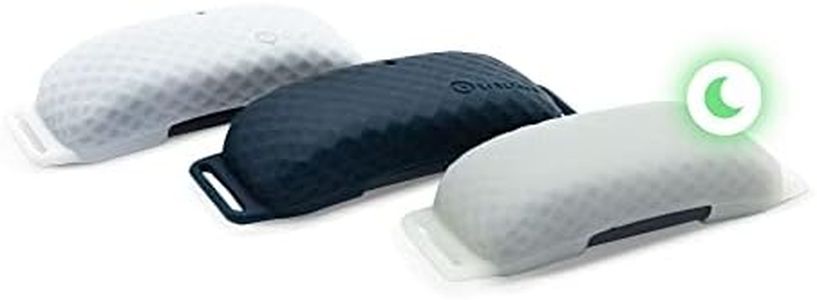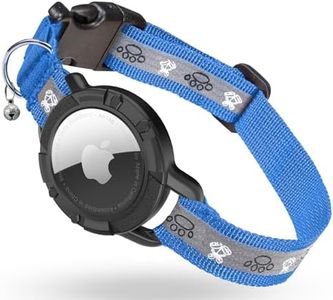We Use CookiesWe use cookies to enhance the security, performance,
functionality and for analytical and promotional activities. By continuing to browse this site you
are agreeing to our privacy policy
10 Best Cat Trackers
From leading brands and best sellers available on the web.Buying Guide for the Best Cat Trackers
When choosing a cat tracker, it's important to think about how you and your cat live. Are you often in the city, suburbs, or countryside? Do you want to monitor where your cat goes or just track them in case they get lost? There are several types of cat trackers, and understanding the differences will help you choose one that fits your needs. Some use GPS to tell you the exact location, while others rely on short-range technology. Before buying, consider your cat’s habits, your comfort with technology, and how much detail you want from the tracker.Tracking TechnologyTracking technology refers to the method the device uses to find your cat’s location. The most common types are GPS, Bluetooth, and radio frequency (RF). GPS trackers provide real-time location almost anywhere outdoors, making them best for adventurous cats in large or rural areas. Bluetooth trackers work over shorter distances and are good for indoor or backyard use, but won’t help much if your cat gets far. RF trackers are simple, have no monthly fee, and work with a handheld receiver, but they’re also short-range and less precise. Pick one based on whether your cat roams far or stays close, and how much you want to rely on mobile apps.
Battery LifeBattery life tells you how long the tracker will work before needing a charge. Trackers with GPS usually drain faster, often lasting from a few days to a week. Bluetooth and RF trackers can last from several weeks to months because they use less power. If you want minimal fuss and less frequent charging, a longer battery life may be important, especially if your cat is outdoors a lot. For cats that stay mostly inside or nearby, shorter battery life might be fine since you can check and recharge often.
Size and WeightSize and weight are important because your cat needs to be comfortable wearing the tracker all day. Lighter, smaller trackers are usually better for cats so they don’t notice them. If your cat is very small or sensitive to collars, look for ultra-light trackers. Some trackers are bulkier and intended for larger pets, which may make them uncomfortable for smaller cats. The right size depends on your cat’s age, size, and tolerance for accessories.
Water ResistanceWater resistance shows if the tracker can survive rain, puddles, or if your cat plays near water. Some trackers are just splash-proof, while others can survive full submersion for a limited time. If your cat spends a lot of time outdoors or likes exploring in wet conditions, choose a tracker with a high level of water resistance to avoid damage. For mostly indoor cats, a basic water-resistant model will usually be enough.
RangeRange is about how far the tracker can communicate with your phone or its receiver. GPS trackers often have unlimited range outdoors, as long as they have a cellular signal. Bluetooth trackers have a limited range, usually around 30-100 meters, and RF trackers vary but generally work within a few hundred meters. If you’re worried about your cat traveling far from home, prioritize range and choose a tracker that will still work at longer distances.
App FeaturesApp features are the extra tools you get with your tracker’s smartphone app, such as live location tracking, history of where your cat’s been, safe zones with alerts if your cat leaves a set area, or activity monitoring. If you want reassurance or like to see your cat’s whole routine, choose a tracker with a detailed, user-friendly app. If you just want to find your cat quickly, simple tracking tools may be enough.
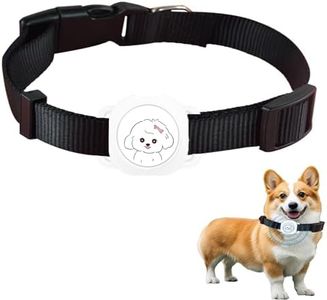
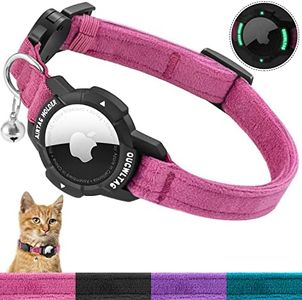

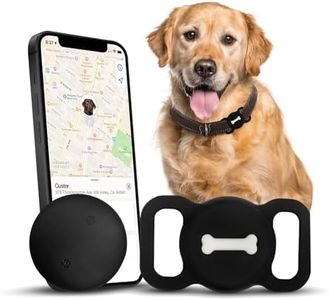
![[2 Pack] I](https://images-proxy.bestreviews.guide/5QdOCbVsOEbH7dQQscvBn98F1KI=/0x300/https://m.media-amazon.com/images/I/41iMukwDYRL._AC_CX679_.jpg)
